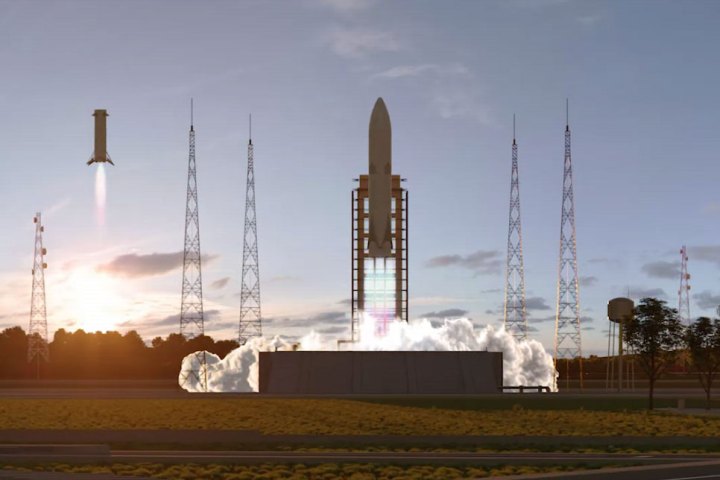SpaceX may be best known for revolutionizing rocket launches with its reusable rockets, including the Falcon 9, which has a reusable first stage and has been used for launching astronauts and cargo to the International Space Station for several years now. Now, Europe wants to get in on the action. The European Space Agency (ESA) has announced it is developing its own reusable rocket engine.
The Prometheus would be used in European rockets like the Ariane 6 and its successors, with the aim of making rocket launches considerably cheaper. The ESA described its planned engine as “the precursor of ultra-low-cost rocket propulsion that is flexible enough to fit a fleet of new launch vehicles for any mission and will be potentially reusable.”
The French space agency CNES, along with the aerospace company Ariane Group, unveiled its plans for a reusable rocket last year. The ESA has now chosen to fully fund the Prometheus engine design to create a usable version that it hopes can be produced considerably cheaper — down to a tenth of the cost — than current options.

“This Prometheus precursor runs on liquid oxygen — methane which brings high efficiency, [and] allows standardization and operational simplicity. Methane propellant is also widely available and easy to handle,” the ESA said in a blog post. The engine will be able to be adapted to different needs: “Features such as variable thrust, multiple ignitions, suitability for main and upper-stage application, and minimized ground operations before and after flight also make Prometheus a highly flexible engine,” the ESA added.
The ESA will soon begin testing the hardware components of the Prometheus engine at the German Space Agency facilities in Lampoldshausen, Germany. It says it already has manufactured components including the turbo pump’s turbine, pump inlet, and gas generator valves, and it is currently manufacturing main subsystems.
The aim is to finish the first combustion chamber model this month, then deliver the real version of this combustion chamber by the end of the year, before assembling a full demonstration version of the engine for testing by 2021.
Editors' Recommendations
- SpaceX slow-motion video shows powerful Raptor rocket engine shutting down
- ULA’s Delta IV Heavy rocket is about to take its final flight
- SpaceX shares stunning night shot of its Super Heavy booster
- Get out the scrapers: Euclid space telescope is getting deiced
- SpaceX shares awesome rocket imagery from Starship flight




